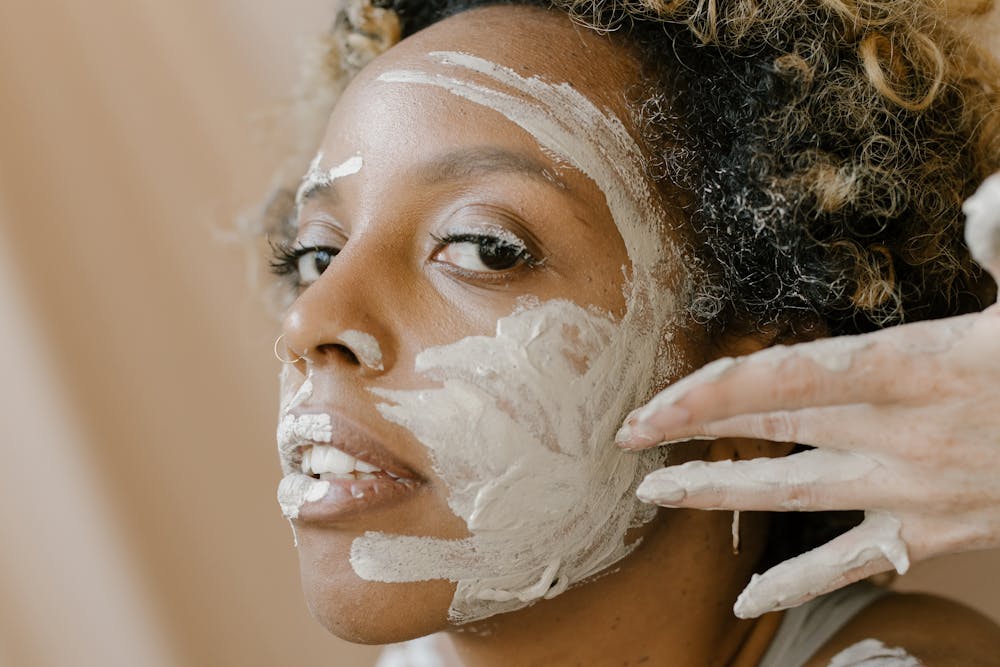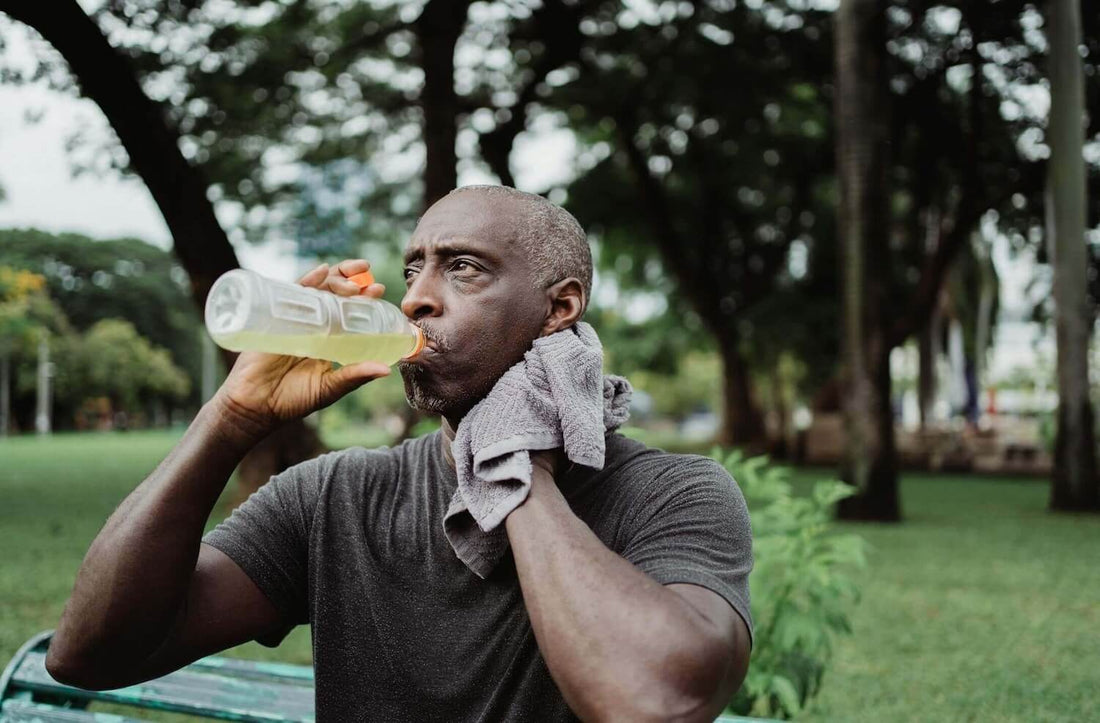In an era of complex skincare formulations filled with unpronounceable ingredients, the combination of beef tallow and raw honey represents a return to nature's most powerful skin healing traditions. This unlikely duo – animal fat and bee nectar – creates one of the most effective DIY face masks you can make at home, delivering deep nourishment, antimicrobial protection, and barrier repair in a single treatment.
The synergy between these two ancient ingredients transcends their individual benefits, creating a mask that addresses multiple skin concerns simultaneously while remaining gentle enough for the most sensitive complexions. Understanding how to properly prepare and customize this mask opens the door to professional-quality skincare results using ingredients your great-grandmother would recognize.
The Science Behind This Powerful Partnership
The effectiveness of tallow and honey lies in their complementary mechanisms of action. While tallow provides structural support and barrier repair through its bioidentical fatty acid profile, honey contributes antimicrobial properties, gentle exfoliation, and hydration through its unique enzymatic activity and humectant properties.
Raw honey contains over 180 naturally occurring compounds, including enzymes, amino acids, vitamins, and minerals that work synergistically with skin's natural processes. The enzyme glucose oxidase produces hydrogen peroxide when honey contacts moisture, creating a gentle antimicrobial effect that helps eliminate acne-causing bacteria without the harsh irritation of synthetic alternatives.
Beef tallow's molecular structure mirrors human sebum composition, allowing it to penetrate deeply into skin layers where it can rebuild and strengthen the lipid barrier. This biocompatibility means the mask won't sit on the surface like many clay or cream masks, but actually integrates with existing skin lipids to provide lasting benefits.
The pH of raw honey (3.2-4.5) closely matches healthy skin's acid mantle, while tallow's neutral pH helps buffer and stabilize this protective barrier. This pH compatibility ensures the mask supports rather than disrupts the delicate microbial balance that keeps skin healthy and resistant to breakouts.
Essential Ingredients and Quality Considerations
Creating an effective tallow and honey mask begins with sourcing the highest quality ingredients. The potency and safety of your final product depend entirely on the purity and processing methods of your raw materials.
Premium Beef Tallow Selection: Grass-fed, pasture-raised tallow provides the optimal fatty acid profile and vitamin content for skincare applications. The rendering process should involve multiple filtrations and controlled heating to remove impurities while preserving beneficial compounds. Quality tallow appears white to pale yellow when solid, with a smooth texture that becomes pliable when warmed.
Avoid tallow that appears gray, has a granular texture, or emits off-odors, as these indicate poor processing or contamination. Third-party testing for heavy metals and microbiological safety provides additional assurance, particularly important for facial applications where absorption is enhanced.
Raw Honey Specifications: Unfiltered honey retains the enzymes, pollen, and beneficial compounds that make this ingredient therapeutically valuable. Manuka honey, with its unique methylglyoxal content, offers enhanced antimicrobial properties but isn't essential for effective masks. Local raw honey often provides additional benefits through trace amounts of local pollen that may support skin adaptation to environmental allergens.
Commercial honey processing typically involves heating and filtration that destroys many beneficial compounds. Look for honey that crystallizes naturally, appears cloudy rather than crystal clear, and comes from reputable beekeepers who prioritize minimal processing methods.
Basic Mask Preparation Method
The fundamental technique for creating tallow and honey masks involves gentle heating to achieve proper consistency while preserving the delicate compounds that provide therapeutic benefits.
Equipment Setup: Use a double boiler or create one using a heat-proof bowl over simmering water. Direct heat can damage honey's enzymes and create uneven melting of tallow. Wooden or silicone utensils prevent contamination and provide better mixing control than metal implements.
Clean all equipment thoroughly with alcohol or boiling water before use. Even trace amounts of soap residue can interfere with the mask's effectiveness and potentially irritate sensitive skin.
Temperature Control: Maintain water temperature below 104°F (40°C) to preserve honey's enzymatic activity. Tallow melts completely around 95-100°F, making this temperature range ideal for both ingredients. Use a thermometer to monitor temperature, as visual cues can be misleading.
If the mixture becomes too hot, remove from heat and allow cooling while stirring gently. The goal is achieving a smooth, homogeneous blend without destroying beneficial compounds through excessive heat exposure.
Blending Technique: Start with equal parts tallow and honey by volume for the basic recipe. Melt tallow first, then remove from heat before slowly incorporating honey while stirring continuously. This prevents honey from becoming too hot and ensures even distribution.
The mixture should achieve a smooth, creamy consistency similar to thick body butter. If separation occurs, return to gentle heat while stirring until re-emulsified. Properly prepared masks maintain their consistency for several weeks when stored appropriately.
Customization for Different Skin Types
The versatility of tallow and honey allows for targeted modifications that address specific skin concerns without compromising the base formula's effectiveness.
Oily and Acne-Prone Skin Variations: Reduce tallow to 40% of the mixture and increase honey to 60% to emphasize antimicrobial benefits while maintaining barrier support. Add 1 teaspoon of finely ground oatmeal per 2 tablespoons of base mixture to provide gentle mechanical exfoliation that helps clear clogged pores.
A few drops of tea tree oil can enhance antimicrobial activity, but start with minimal amounts as this ingredient can be irritating. Alternatively, incorporate 1 teaspoon of green clay powder to add oil-absorbing properties without harsh drying effects.
Dry and Mature Skin Formulations: Increase tallow percentage to 70% of the mixture for enhanced barrier repair and moisture retention. Add 1 teaspoon of finely ground almonds or rice powder for gentle exfoliation that promotes cell turnover without irritation.
Incorporating 1 teaspoon of rosehip seed oil provides additional vitamin C and essential fatty acids that support collagen production and skin repair. The oil should be added after the tallow-honey base has cooled slightly to prevent heat damage.
Sensitive Skin Adaptations: Maintain equal ratios but extend the melting time to ensure complete homogenization, which reduces the likelihood of grainy textures that might irritate delicate skin. Test patch on inner wrist before facial application, waiting 24 hours to observe any reactions.
Chamomile-infused honey, created by gently warming honey with dried chamomile flowers and straining, adds anti-inflammatory compounds that further soothe reactive skin. This infusion process should be done separately before incorporating into the tallow base.
Combination Skin Solutions: Create separate small batches optimized for different facial zones. Use higher honey concentration for T-zone areas prone to oiliness, while applying tallow-rich formulations to drier cheek and eye areas.
Alternatively, add bentonite clay to small portions of the base mixture for spot-treating oily areas, while keeping the standard formula for normal zones. This targeted approach maximizes benefits across varying skin needs.
Advanced Preparation Techniques
Mastering sophisticated preparation methods elevates homemade masks to professional quality while maintaining the simplicity that makes DIY skincare appealing.
Infusion Methods: Creating herb-infused tallow adds therapeutic compounds specific to various skin concerns. Gently heat tallow with dried herbs like calendula, lavender, or comfrey for 2-4 hours at low temperature, then strain. This process extracts fat-soluble compounds that enhance the base ingredient's benefits.
Solar infusion provides a gentler alternative, placing tallow and herbs in a sealed jar in direct sunlight for several days. This method requires longer processing time but preserves more delicate compounds that might be damaged by heat.
Fermentation Enhancement: Briefly fermenting honey with specific beneficial bacteria can increase its probiotic content, potentially supporting healthy skin microbiome balance. This advanced technique requires careful attention to sterile conditions and proper bacterial cultures.
While fermentation isn't necessary for effective masks, some practitioners report enhanced results from fermented honey preparations. Research this technique thoroughly and consider the added complexity before attempting.
Crystallization Utilization: Rather than avoiding crystallized honey, embrace its natural texture for enhanced exfoliation properties. Partially crystallized honey provides gentle mechanical action that helps remove dead skin cells while delivering enzymatic benefits.
Control crystallization by adjusting storage temperature and humidity. Honey stored at around 57°F will crystallize slowly, creating fine crystals ideal for facial applications. Coarser crystals from faster crystallization may be too abrasive for facial use.
Application Techniques for Maximum Benefit
Proper application transforms a simple mask into a therapeutic treatment that maximizes ingredient penetration and effectiveness.
Skin Preparation: Begin with thoroughly cleansed skin using a gentle, pH-balanced cleanser that removes surface impurities without stripping natural oils. Avoid harsh scrubs or alcohol-based products immediately before masking, as these can increase sensitivity.
Light steam exposure opens pores and enhances absorption. Hold face over a bowl of warm water with a towel creating a tent, or simply apply the mask after a warm shower when skin is naturally warmed and softened.
Application Method: Use clean fingers or a silicone brush to apply mask in upward strokes, avoiding the delicate eye area. The consistency should allow smooth spreading without tugging or pulling skin. If the mixture is too thick, warm slightly between palms before application.
Apply in thin, even layers rather than thick coatings. The mask should be visible but not opaque, allowing skin to breathe while receiving treatment benefits. Focus extra attention on problem areas while maintaining overall coverage.
Timing and Removal: Leave mask on for 15-20 minutes for normal skin, reducing to 10-15 minutes for sensitive complexions. The mixture should remain slightly tacky but not wet throughout the treatment period. If complete absorption occurs before the recommended time, the mixture may have been applied too thinly.
Remove with warm, damp cloths using gentle circular motions. The natural exfoliation from honey crystals and the cloth texture helps remove dead skin cells. Follow with cool water rinse to close pores and refresh skin.
Storage and Preservation Methods
Proper storage maintains mask quality and extends shelf life while ensuring safety for repeated use.
Container Selection: Use glass jars with tight-fitting lids to prevent oxidation and contamination. Avoid plastic containers, which can interact with ingredients over time and may harbor bacteria in microscopic scratches. Small portions in separate containers reduce contamination risk from repeated opening.
Dark glass provides additional protection against light-induced degradation of sensitive compounds. Amber or cobalt blue jars offer optimal protection while maintaining visibility of contents.
Environmental Conditions: Store in cool, dark locations with stable temperatures. Bathroom storage isn't ideal due to humidity fluctuations from showering. Refrigeration can extend shelf life but may cause the mixture to become too firm for easy application.
Monitor for signs of spoilage including off-odors, color changes, or mold growth. Properly prepared and stored masks typically remain viable for 2-3 months, though smaller batches used quickly provide optimal freshness.
Portion Control Prepare: smaller quantities more frequently rather than large batches stored long-term. This approach ensures peak freshness and allows for seasonal adjustments or formula modifications based on changing skin needs.
Use clean utensils each time you remove product from storage containers. Cross-contamination from fingers or used applicators can introduce bacteria that compromise the entire batch.
Troubleshooting Common Issues
Understanding potential problems and their solutions ensures consistent success with homemade mask preparation.
Separation Problems: If tallow and honey separate during cooling, reheat gently while stirring continuously. Temperature shock from cooling too quickly often causes separation. Allow gradual cooling at room temperature while stirring occasionally until mixture maintains consistency.
Adding a small amount of beeswax (1-2% of total mixture) can improve emulsion stability, though this changes the mask's texture slightly. Lecithin powder serves as a natural emulsifier for those preferring to avoid additional waxes.
Texture Issues: Grainy texture usually indicates insufficient heating or mixing time. Return mixture to gentle heat and stir until completely smooth. Strain through fine mesh if lumps persist, though this shouldn't be necessary with proper preparation technique.
Overly soft consistency suggests too much honey or insufficient cooling time. Refrigerate briefly to firm up, or add small amounts of additional tallow to achieve desired consistency.
Sensitivity Reactions: Patch testing prevents adverse reactions, but if irritation occurs during use, remove immediately with cool water. Follow with gentle, fragrance-free moisturizer to soothe skin. Future applications should use reduced concentrations or eliminate potential irritants.
Some individuals react to specific honey varieties or pollen content. Switching to different honey sources or using filtered honey may resolve sensitivity issues while maintaining therapeutic benefits.
Seasonal Adaptations and Modifications
Adjusting mask formulations based on seasonal skin changes optimizes effectiveness throughout the year.
Winter Formulations: Cold weather and indoor heating create additional drying stress requiring richer formulations. Increase tallow percentage and consider adding nourishing oils like avocado or sweet almond oil for enhanced moisture retention.
Static electricity and dry air can make application more challenging. Slightly warming the mask and ensuring adequate skin humidity through steam or humidifier use improves application comfort and effectiveness.
Summer Adjustments: Higher temperatures and humidity may require lighter formulations with increased honey content for enhanced antimicrobial protection against sweat-related breakouts. Storage becomes more critical as heat can affect mixture stability.
Consider adding cooling ingredients like cucumber extract or aloe vera gel for refreshing properties. These additions may require preservatives for stability, so use quickly or prepare smaller batches more frequently.
Transitional Seasons: Spring and fall skin changes benefit from balanced formulations that can adapt to fluctuating environmental conditions. Standard recipes often work well during these periods, though attention to individual skin response remains important.
Allergy seasons may require modifications for those sensitive to pollen content in raw honey. Filtered honey or temporarily switching to alternative ingredients prevents reactions while maintaining skincare routines.
Complementary Treatments and Routines
Integrating tallow and honey masks into comprehensive skincare routines maximizes benefits while maintaining skin balance.
Pre-Treatment Preparation: Gentle exfoliation 1-2 days before masking removes surface buildup that might interfere with ingredient penetration. Avoid harsh scrubs immediately before treatment, as increased sensitivity can lead to irritation.
Facial steaming or warm compress application before masking enhances absorption and comfort. This preparation step is particularly beneficial for mature or very dry skin that may have reduced penetration capacity.
Post-Mask Care: Follow mask removal with alcohol-free toner to restore pH balance and remove any residual traces. Lightweight, non-comedogenic moisturizers work well if additional hydration is needed, though many users find the mask provides sufficient moisture.
Sunscreen application becomes particularly important after treatments that may increase photosensitivity. While tallow and honey generally don't cause sun sensitivity, the exfoliation effects may temporarily increase UV vulnerability.
Frequency Guidelines: Weekly application suits most skin types, though oily or problem skin may benefit from twice-weekly treatments. Sensitive skin should start with bi-weekly applications, increasing frequency gradually as tolerance develops.
Monitor skin response carefully during the first month of use. Initial improvements may be followed by adjustment periods as skin adapts to new treatment routines. Consistency produces better results than sporadic intensive treatments.
Integration with Professional Treatments
Understanding how DIY masks interact with professional skincare treatments ensures safe and effective combination approaches.
Dermatological Compatibility: Inform skincare professionals about home treatment routines, particularly when using prescription medications or undergoing professional procedures. The gentle nature of tallow and honey masks generally makes them compatible with most treatments, but timing coordination may be important.
Retinoid users should exercise caution with any exfoliating treatments, including honey's natural enzymatic action. Spacing applications appropriately prevents over-exfoliation and maintains skin comfort.
Spa Treatment Coordination: Professional facials and DIY masks can complement each other when properly timed. Use home treatments to maintain benefits between professional sessions rather than as replacements for more intensive procedures.
Chemical peels and microdermabrasion create increased skin sensitivity that may require temporary modification of home treatment routines. Resume normal masking gradually after professional treatments.
Medical Consultation: Needs Individuals with specific skin conditions like rosacea, eczema, or severe acne should consult healthcare providers before beginning new treatment routines. While natural ingredients are generally gentler, individual sensitivities and condition-specific needs require professional evaluation.
Pregnancy and nursing may affect skin sensitivity and ingredient tolerance. Natural doesn't always mean safe for all conditions, so medical guidance ensures appropriate skincare choices during these periods.
Cost-Effectiveness and Value Analysis
Understanding the economic benefits of DIY masking helps justify the initial investment in quality ingredients while appreciating long-term savings.
Ingredient Cost Breakdown: High-quality tallow and raw honey require significant initial investment but provide numerous applications. Calculate cost per use rather than total ingredient cost to appreciate the value proposition compared to commercial premium masks.
Bulk purchasing reduces per-unit costs, though storage considerations limit practical quantity. Sharing ingredient costs with friends or family members who also make masks can reduce individual expenses while ensuring freshness through faster turnover.
Commercial Comparison: Professional spa treatments featuring similar natural ingredients often cost $75-150 per session. DIY versions provide comparable benefits at a fraction of the cost while allowing for customization impossible in commercial settings.
Premium commercial masks with similar ingredient quality range from $30-80 per container. Homemade versions typically cost $3-8 per application depending on ingredient quality and sourcing, representing significant savings over time.
Long-term Investment Value: Skills developed through DIY mask making transfer to other skincare preparations, potentially replacing multiple commercial products with homemade alternatives. This knowledge becomes increasingly valuable as skincare costs continue rising.
Quality ingredients often provide benefits beyond single applications. Leftover honey serves kitchen uses, while tallow can be used for other skincare applications, maximizing ingredient value and reducing waste.
Environmental and Sustainability Considerations
Choosing sustainable ingredients and practices aligns skincare routines with environmental consciousness while often improving product quality.
Sourcing Ethics: Grass-fed tallow from regenerative agriculture supports farming practices that improve soil health and carbon sequestration. Local sourcing reduces transportation impacts while often providing fresher, higher-quality ingredients.
Supporting small-scale beekeepers who practice sustainable hive management contributes to pollinator conservation efforts critical for ecosystem health. Raw honey from these sources often provides superior therapeutic benefits compared to industrial alternatives.
Waste Reduction: DIY mask making eliminates packaging waste associated with commercial products while allowing precise quantity control that minimizes unused product disposal. Glass storage containers can be reused indefinitely with proper care.
Failed batches or expired products can often be composted or used for non-facial applications rather than contributing to household chemical waste. Natural ingredients biodegrade safely without environmental contamination concerns.
Carbon Footprint Considerations: Local ingredient sourcing dramatically reduces transportation-related emissions compared to commercial products manufactured and shipped globally. Simple preparation methods require minimal energy input compared to industrial processing.
Reduced packaging, transportation, and manufacturing requirements make DIY approaches significantly more environmentally friendly than commercial alternatives, even accounting for ingredient sourcing impacts.
Conclusion: Embracing Natural Skincare Wisdom
The journey into creating effective tallow and honey face masks represents more than just mixing two ingredients – it's an exploration of how simple, natural compounds can provide sophisticated skincare benefits when properly understood and applied.
This ancient combination challenges modern assumptions about skincare complexity, demonstrating that effectiveness doesn't require extensive ingredient lists or complicated formulations. Instead, the synergy between carefully selected natural ingredients can address multiple skin concerns while remaining gentle enough for regular use.
The customization possibilities ensure that individual skin needs can be met without compromise, while the cost-effectiveness makes premium skincare accessible regardless of budget constraints. Most importantly, the process of creating these masks connects us with traditional knowledge while providing modern convenience and safety.
Success with DIY tallow and honey masks requires patience, attention to quality, and willingness to adjust formulations based on individual response. The rewards – healthier, more radiant skin achieved through natural means – justify the initial learning curve and ongoing attention to detail.
As you embark on this natural skincare journey, remember that consistency and quality matter more than complexity. Start with basic formulations, master proper techniques, and gradually explore customizations that address your specific skin needs. The combination of ancient wisdom and modern understanding creates possibilities for skincare that's both effective and aligned with natural processes.
Whether you're seeking alternatives to harsh commercial products, looking to reduce environmental impact, or simply curious about traditional skincare methods, tallow and honey masks offer a gateway into natural beauty practices that honor both skin health and ingredient integrity.




